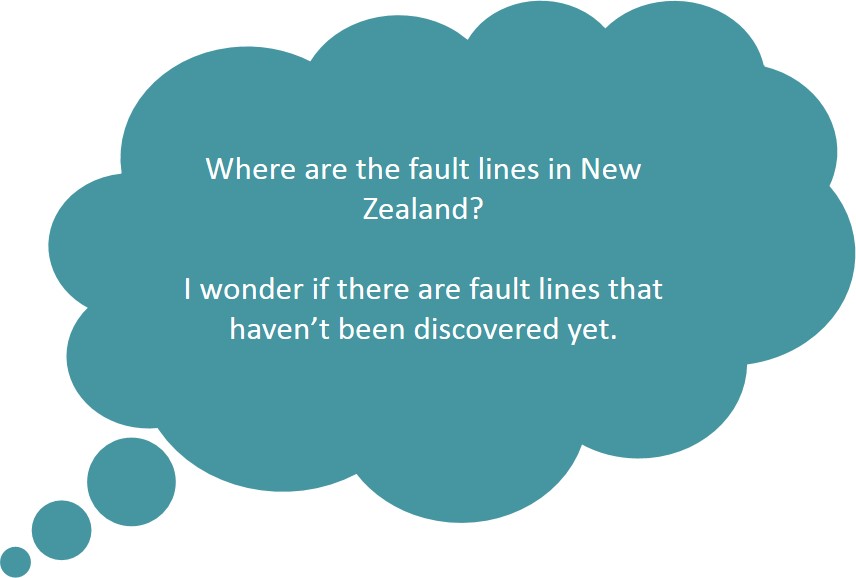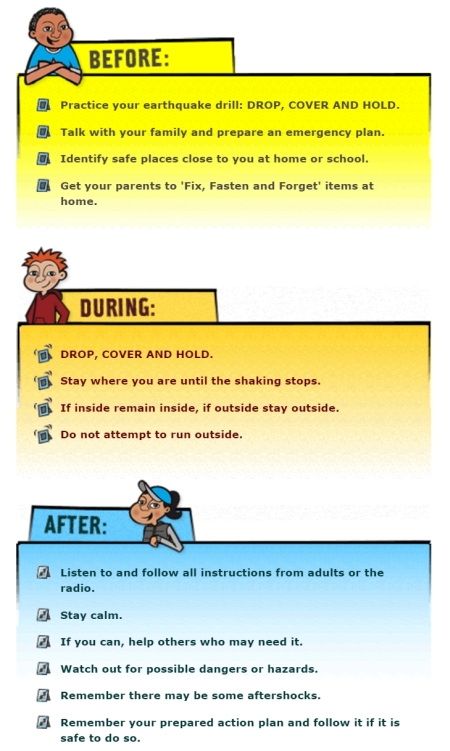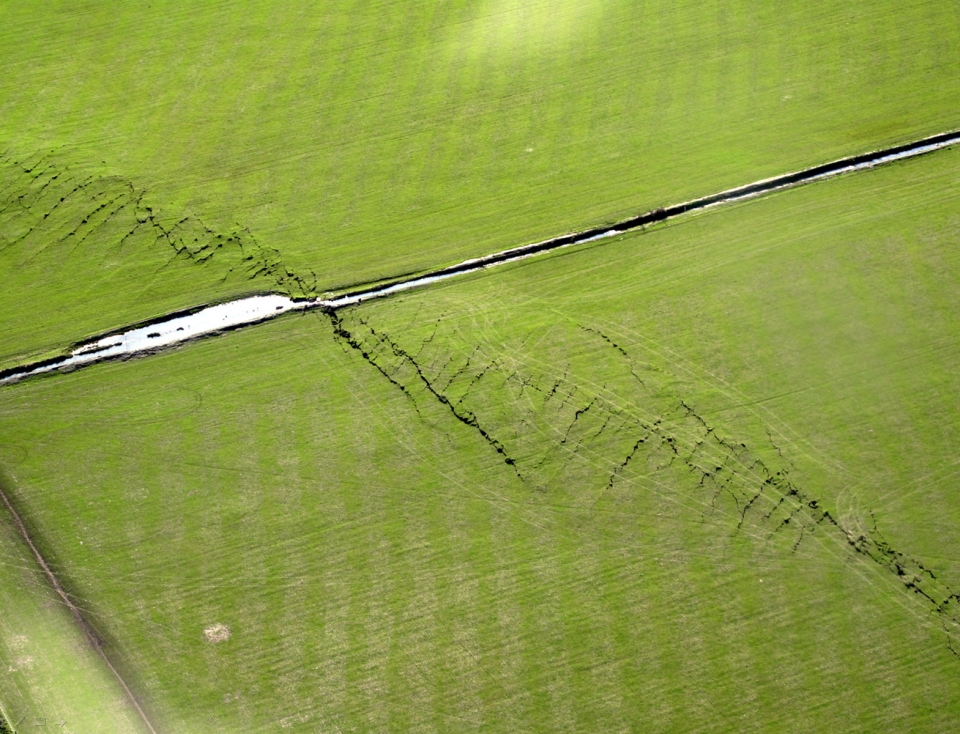Faults
A fault is a break in the rocks that make up the Earth's crust, along which rocks on either side have moved past each other. Sometimes the blocks of rock on either side of a fault suddenly shift to a new position in just a few seconds. This sudden release of energy sends out waves, which are felt on the surface as an earthquake. The strength of the earthquake depends on the area of fault that has shifted and the amount of movement. A small area and small movement creates a small earthquake.

Seismic waves
The place where a fault ruptures is called the focus or origin, and the point directly above on the Earth’s surface is called the epicentre. The energy released by a fault movement radiates outwards as seismic waves, or shock waves.
Earthquakes in Māori tradition
For centuries before Europeans arrived, Māori had experienced rū whenua which means ‘the shaking of the land’. According to Māori tradition, earthquakes are caused by the god Rūaumoko (or Rūamoko), the son of Ranginui (the Sky) and his wife Papatūānuku (the Earth).
Rangi had been separated from Papa, and his tears had flooded the land. Their sons resolved to turn their mother face downwards, so that she and Rangi would not see one another’s sorrow and grieve more. When Papatūānuku was turned over, Rūaumoko was still at her side and was carried to the world below. To keep him warm there he was given fire. He is the god of earthquakes and volcanoes, and the rumblings that disturb the land are made by him as he walks about.
Anywhere in New Zealand
All of New Zealand is prone to earthquakes. However, there is a variation in the level of earthquake activity across the country. Wellington is one of the most active of New Zealand’s seismic regions and Auckland one of the least active. Large earthquakes can still happen in regions with lower activity. This is best illustrated by the recent events in Christchurch.
Most of New Zealand’s seismic activity, including its major historic earthquakes, occurs within a broad zone of deformation (about 100km wide) that runs along the plate boundary from offshore East Cape to Fiordland.
What can we expect in the future?
Based on its seismic history, New Zealand should experience 50 magnitude 5 earthquakes and two magnitude 6 earthquakes each year, four magnitude 7 earthquakes per decade, and a magnitude 8+ earthquake every century. However, earthquakes are not evenly spread over time and they often occur in clusters. A damaging earthquake could happen at any time. At least 25 per cent of the population is expected to experience shaking great enough to damage household contents and buildings in the next 50 years.










